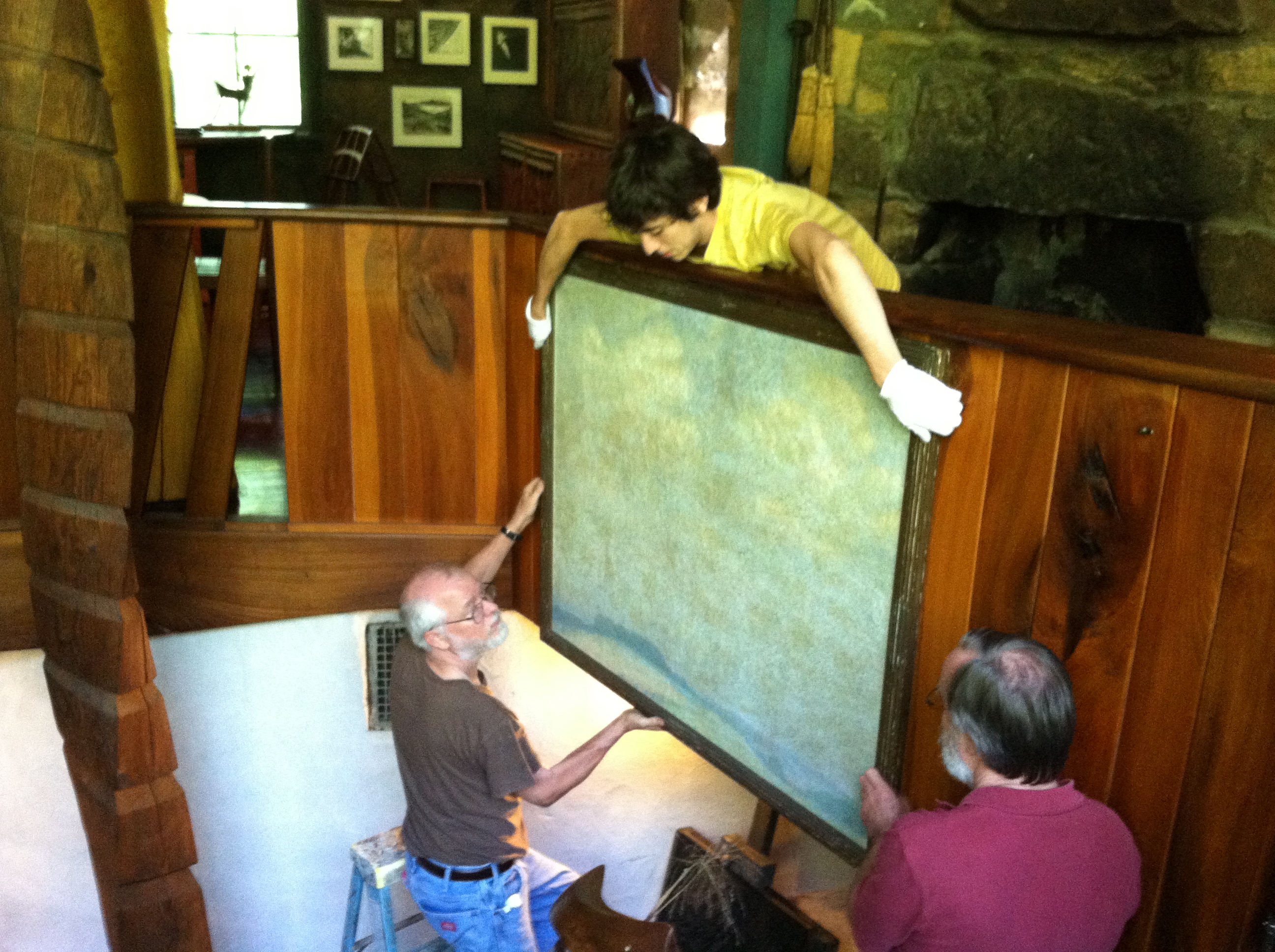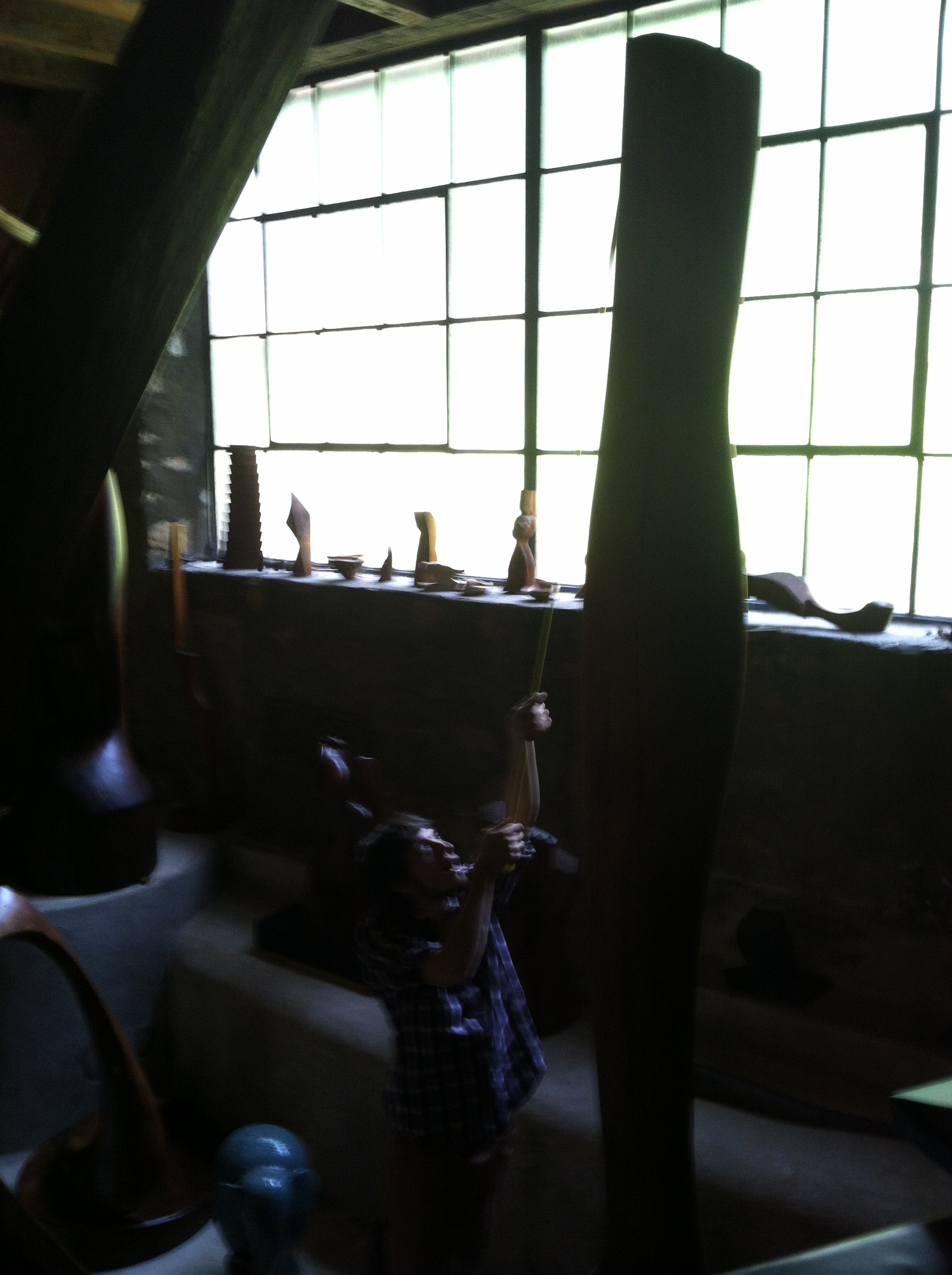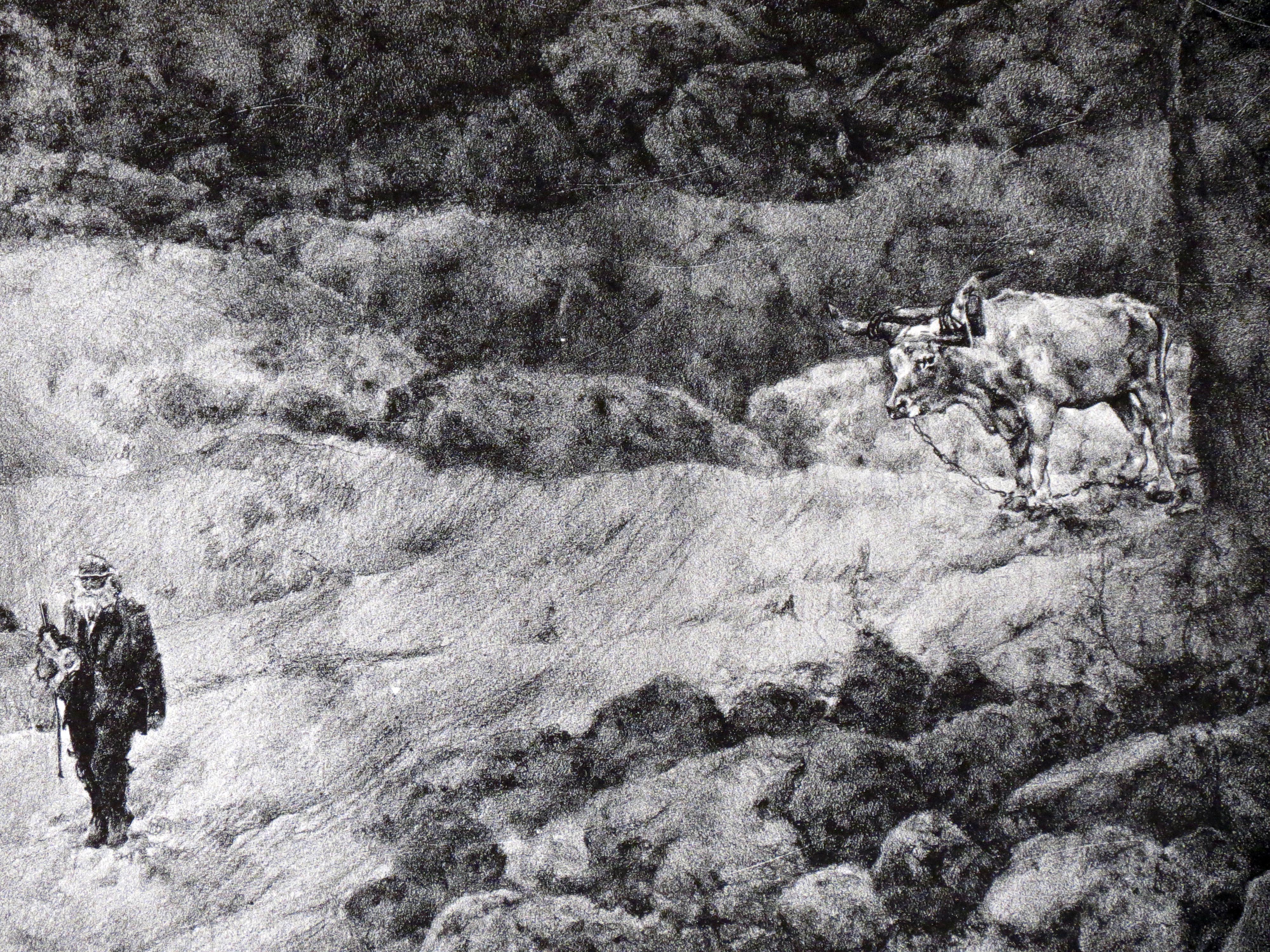When the Wharton Esherick Museum was created, a plan was drafted for Wharton’s heirs to sell their share of the studio collection to the Museum, a non-profit corporation. It would be a “bargain sale” so that the Museum could afford such a large collection and act as good stewards to exhibit and share Wharton’s life work with visitors. A capital campaign raised the money, and the Museum is now purchasing the collection in installments from the family. As we complete the acquisition, we have begun the process of accessioning the objects into the permanent museum collection. The word accession is used to describe the process by which a museum officially includes an object into its collection.

Our intern Mike steadies the painting from above as curator Paul Eisenhauer, (right) and handyman extraordinaire Peter Knecht (left) help us take “Turkey Buzzards” off of the wall to examine it for an accession number.
This process starts with the assignment of an accession number, an individual object ID number unique to each object that includes the year the object was accessioned into the collection, what its accession group is and what number item it is in the accession group. WEM uses the standard tri-nomial numbering system suggested by the American Association of Museums. (Example: 2012.001.017) To keep track of our collection, we use PastPerfect Museum Software, which is produced by Pastime Software Company, Inc. PastPerfect is used by thousands of large and small museums all over the United States and we are fortunate to have them headquartered just down the road from us in Exton, Pennsylvania. Once accessioned, cataloging information can be added directly to the PastPerfect record.
This summer, we have two interns who are dutifully cataloging each object in the acquisition: Mike Cavuto and Aurora McFee. Mike and Aurora have been working hard, learning the ins and outs of curation and collections management. We started the cataloging project with Wharton’s oil paintings. This required that we take down the paintings from their storage location in the studio, so on went the cotton gloves and Aurora and Mike learned how to properly handle museum objects: two hands at all times no matter how great or small. With each object, Mike and Aurora record basic information such as the title, artist, height, width, medium, etc., but they also record a detailed description, photograph the object, records its current location as well as the object’s over all condition. After all of this information is recorded, the object’s ID number is applied directly to the object so that any staff member can easily look up the object in PastPerfect and find all of the information they need. The data will be easily accessible for future research and collections management (tracking outgoing & incoming loans, condition & conservation reports and the object’s location on site).
We truly appreciate our interns for contributing their time and efforts in this daunting task of cataloging the collection. This month, we shine our volunteer spotlight on Aurora and Mike.
Aurora is a veteran WEM volunteer, who started as a docent at the age of 16. A class assignment prompted her to volunteer, however her artistic affinity and love for Esherick’s work keeps her coming back. This fall, Aurora returns to the Rhode Island School of Design for her senior year. At RISD, Aurora studies print making, and produces art in the woodcut, lithography and intaglio mediums.
She even makes her own paper in the Japanese tradition, which she learned while in Kyoto this past winter. She is a talented artist; most of her work carries a bucolic theme with nostalgia for the days of John Muir or Kit Carson. This past spring, Aurora contributed a stunning woodcut to our major exhibition, Poplar Culture: the Celebration of a Tree. To view her work, visit her soon to launch website www.auroramcfee.com.
Mike, has continually impressed us as a quick study and a diligent and enthusiastic volunteer. His accomplishments in organizing poetry readings and art galleries in the West Chester area, as well as his writing, arranging and producing of the original rock opera, Dooms Service (it’s one performance was unfortunately never recorded). He first visited WEM with his high school culture club, Pie in the Sky. He fell in love with the Thoreau-like feel, and how the Museum resonated Walden in its construction and setting. This initial visit stuck with him and led him to inquire about an internship this summer.
Mike has found that one of the perks of his internship is exploring and studying the treasures throughout the Museum. He has spent considerable time exploring Wharton’s library not only enjoying Esherick’s eclectic collection but also doing research for a project on connections between Wharton’s work and the Bauhaus movement in Germany. In addition to the cataloging project, Mike is also leading tours–a big help in this busy summer tour season.

The perils of accurately measuring WE sculpture. Mike takes the measurement of the base of “Dance Finale”
Along with his volunteer work at the museum, he also manages an ice cream shop in West Chester. This fall, Mike starts his sophomore year as an Art History and English major at Trinity College, University of Toronto. Eventually, he would like to enter into academia and teach English or Art History. His advice to anyone who wants to volunteer at WEM:
“Have fun and explore a little. I find something new every time I’m at the [M]useum. Just like all art, a true love for the work of Wharton has done is infectious. Your tours will love it even more when they see how excited you are to be interacting with this amazing collection of art.”
Thank you Aurora and Mike!
If you’re interested in becoming an intern or docent we’re always happy to talk with you. Cataloging the collection is an ongoing process. If you’re interested please contact Curator, Paul Eisenhauer at [email protected] or our Assistant Curator & Program Director Laura Heemer at [email protected].







